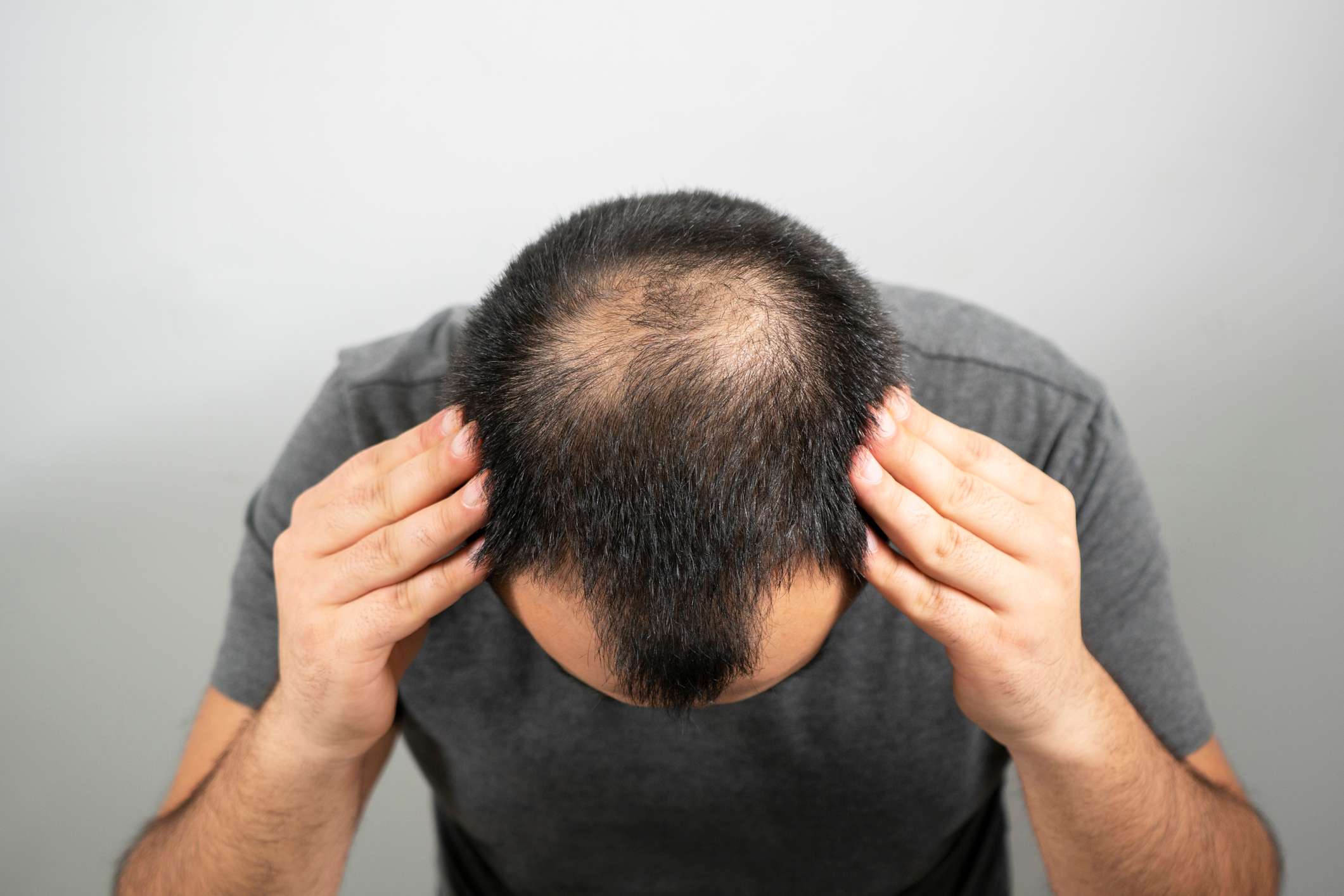Diffuse symptomatic hair loss of the late type
After minor damage to the hair roots, the hair that has prematurely entered the telogen falls out within a few weeks. The hair loss most severely affects the crown of the head. Causes of diffuse symptomatic hair loss of the late type include diabetes mellitus, liver cirrhosis, infectious diseases or certain types of poisoning (e.g. thallium, boron).
Diffuse symptomatic hair loss of the early type
This type of hair loss is caused by massive damage to the hair roots, for example due to AIDS, syphilis or cytostatic therapy (chemotherapeutic agents). The hair falls out in clumps. Once the cause has been remedied, the hair usually grows back. Mental stress such as stress or operations or starvation cures can also cause this form of hair loss.
Diffuse telogen hair loss with an accelerated hair cycle
A genetically determined, accelerated hair cycle can lead to an increased loss of telogen hair without a noticeable reduction in hair growth.
Diffuse anagen hair loss
Diffuse anagen hair loss is characterized by increased hair regrowth after a damaging noxious agent (e.g. chemotherapy). This results in an increase in hair growth, but for those affected it appears as if hair has been lost.
Alopecia areata diffusa
Alopecia areata diffusa is a special and spontaneously reversible form of diffuse hair loss. In most cases, no trigger is found. The disease mainly occurs in women and manifests itself with an initial diffuse hair loss, which leads to a complete loss of scalp hair over a period of several weeks.
Physical-chemical damage to the hair
Harmful chemical or physical influences can cause the hair to break off. Depending on how strong the damaging influence is, either individual areas of the scalp or the entire head can be affected. The trichorrhizogram shows numerous, smoothly broken-off hairs. This form of hair loss is often triggered by the incorrect use of bleaching agents.
Hair loss can occur from a dose of 3.8 Gy (i.e. Gray - unit of measurement for ionized radiation). Hair growth can recover after a few months. A radiation dose of more than 8 Gy can lead to permanent hair loss.
Diffuse hair loss due to mineral, coenzyme, protein or energy deficiency
A deficiency of various micro- and macronutrients (e.g. iron, zinc, calcium, fatty acids and protein) can cause diffuse hair loss in children and adults. Iron deficiency often manifests itself at the beginning with a disturbance of hair growth, as iron is an essential component of hair growth. Other deficiencies that can be associated with hair loss are vitamin C deficiency, biotin deficiency and copper deficiency. Starvation and crash diets can also cause diffuse hair loss.
Diffuse hair loss when taking medication
If hair loss occurs as a result of taking medication, it should be evaluated whether the medication can be stopped or the therapy switched to another active ingredient. In some cases (e.g. chemotherapy), hair loss must be accepted by patients due to the serious indication.
Medications that can cause diffuse hair loss include
Anticoagulants (e.g. heparin, warfarin, Macoumar)
Analgesics and NSAIDs (e.g. diclofenac, naproxen, ibuprofen)
Thyreostatics
Beta-receptor blockers
Cetuximab and panitumubab
Lipid-lowering drugs (e.g. clofibrate, fenofibrate, bezafibrate)
Antiretroviral medication (e.g. indinavir, didanosine)
Methylphenidate (treatment of ADHD)
Cytostatics
Oral contraceptives
Diffuse hair loss due to poisoning
Poisoning with thallium or arsenic classically leads to hair loss. In both cases of poisoning, special so-called Meess's stripes can also be seen on the nails. Arsenic poisoning causes hair loss from the entire scalp. In contrast, with thallium poisoning, individual patches of hair remain. Smoking also damages the hair and hair roots. In this case, hair density, hair length and hair growth are reduced by around 10 to 15 years earlier, as is the case with normal ageing.
Diffuse hair loss due to psychological strain (stress) or neurological/psychiatric illnesses
Mental illness, stress or inflammation of the brain (encephalitis) can lead to temporary or reversible hair loss. Chronic fatigue and burnout are often accompanied by slight, diffuse hair loss. In contrast to androgenetic alopecia, the loss of hair on the receding hairline in men and women is reversible.



